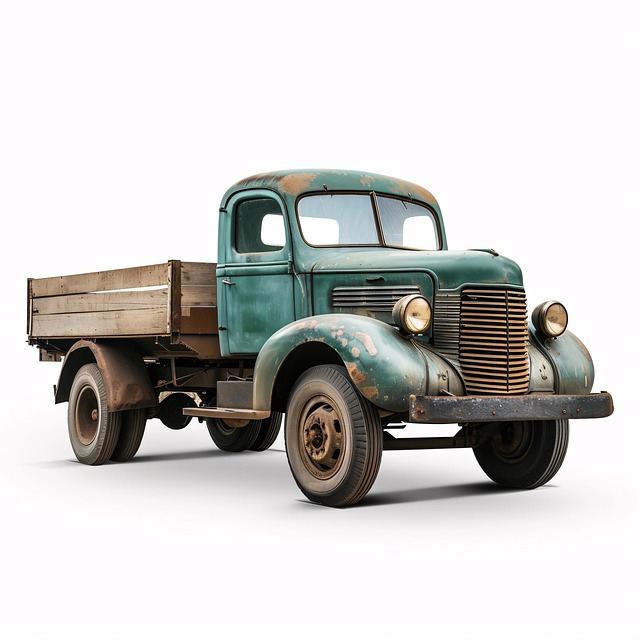Hitch balls, integral for connecting trailers to trucks in Brownsville, are paramount for safe and efficient cargo transport. Regular maintenance, as outlined in the Brownsville fleet Truck repair manual, is crucial to prevent instability and costly breakdowns. Understanding hitch ball types and following the manual's guidelines for inspection and replacement ensures optimal performance, extending vehicle lifespans. Safe installation and removal procedures, along with pre-towing inspections and proper securing techniques, are essential practices for fleet managers in Brownsville.
“Hitch balls: an essential component in the world of truck repairs and logistics. This comprehensive guide explores the versatile role of hitch balls, from their fundamental function in connecting trailers to trucks to their significance in maintaining efficient fleet operations, as evident from Brownsville Fleet’s practices.
We’ll delve into the different types, their applications, and a step-by-step installation process, ensuring safety and best practices for effortless hitching. For truck repair enthusiasts, this manual offers valuable insights, enhancing your understanding of these unassuming yet critical parts.”
- Understanding Hitch Balls: A Basic Overview
- The Role of Hitch Balls in Truck Repairs
- Brownsville Fleet's Perspective on Hitch Ball Maintenance
- Types of Hitch Balls and Their Applications
- Step-by-Step Guide to Hitch Ball Installation and Removal
- Safety Measures and Best Practices for Hitch Ball Use
Understanding Hitch Balls: A Basic Overview

Hitch balls are a fundamental component in the world of truck repairs and fleet management, especially for those in the Brownsville area relying on their vehicles for daily operations. These spherical devices serve as an attachment point for trailers or semi-trailers to a truck’s towing hardware, facilitating seamless transport of cargo. A well-functioning hitch ball is crucial for ensuring both safety and efficiency during transportation.
When it comes to truck repair manuals, understanding the specifications and maintenance requirements of hitch balls is essential. The Brownsville fleet managers should refer to reliable resources, such as comprehensive truck repair manuals, to stay updated on best practices for hitch ball care. Regular inspection, proper cleaning, and timely replacement are key to maintaining optimal performance, aligning with the goals of any well-maintained fleet operation.
The Role of Hitch Balls in Truck Repairs

Hitch balls play a pivotal role in truck repairs, particularly for those managing fleets like the ones in Brownsville. These components are integral to the trailer hitch system, enabling seamless connection between trucks and trailers. According to the Brownsville fleet truck repair manual, regular maintenance of hitch balls is crucial to ensure safety and efficiency during transportation. Any damage or wear can lead to compromised stability, posing significant risks on the road.
In the event of a breakdown or accident involving a truck and trailer, prompt replacement of damaged hitch balls is essential. A well-maintained fleet, as emphasized in the Brownsville manual, relies on such routine checks to prevent costly repairs and ensure smooth operations. By keeping an eye on these seemingly small but vital parts, fleet managers can contribute to overall safety and minimize downtime for their vehicles.
Brownsville Fleet's Perspective on Hitch Ball Maintenance

The Brownsville Fleet, a seasoned entity in the trucking industry, emphasizes the importance of regular hitch ball maintenance as outlined in their comprehensive Truck Repair Manual. They believe that maintaining this critical component is an investment that prevents costly breakdowns and ensures safe operation. By adhering to the manual’s guidelines, fleet managers can extend the lifespan of their vehicles and reduce downtime.
The manual provides a step-by-step approach to inspecting and servicing hitch balls, covering aspects like material checks, surface conditions, and structural integrity. This meticulous process is designed to identify potential issues early on, allowing for timely repairs or replacements. Brownsville Fleet advocates for this proactive maintenance regimen, ensuring their trucks remain reliable workhorses on the road.
Types of Hitch Balls and Their Applications

Hitch balls come in various types, each designed for specific applications and vehicle needs. One common type is the ball mount hitch, which is a permanent fixture attached to the vehicle’s frame. This type is ideal for heavy-duty tasks, such as towing trailers or hauling large equipment, thanks to its strength and stability. For smaller vehicles or those requiring more flexibility, detachable ball hitches offer a convenient solution. These can be easily installed and removed, making them perfect for those who need to tow occasionally without sacrificing interior space when the hitch isn’t in use.
In the context of a Brownsville fleet Truck repair manual, understanding these hitch ball varieties is crucial. For instance, if a truck in the fleet requires regular trailer towing, a robust ball mount hitch would be recommended. Conversely, for lighter vehicles or situations where quick attachment and detachment are necessary, detachable hitches align better with maintenance and operational efficiency. This knowledge ensures that each vehicle is equipped with the most suitable hitch system, enhancing overall fleet management and safety.
Step-by-Step Guide to Hitch Ball Installation and Removal

Step-by-Step Guide to Hitch Ball Installation and Removal
To install a hitch ball, start by ensuring your vehicle’s towing capacity matches the weight of the trailer or load you plan to tow. Next, locate the hitch receiver on your vehicle, typically found in the bed or under the vehicle. Clean the receiver with a wire brush or rag to ensure a secure connection. Using a wrench, insert and tighten the hitch ball according to the manufacturer’s instructions. Double-check the ball’s security by applying gentle force.
For removal, first ensure the vehicle is on level ground for safety. Release the latch mechanism on the hitch ball using the lever provided. Gently pull the hitch ball out of the receiver. Clean any debris from the receiver and store the hitch ball securely in your vehicle or trailer when not in use. Refer to your Brownsville fleet Truck repair manual for detailed specifications and safety precautions specific to your vehicle model.
Safety Measures and Best Practices for Hitch Ball Use

When utilizing hitch balls, safety should always be the top priority for any driver. Before attaching a trailer or caravan, ensure that your vehicle’s hitch ball is in good condition and properly secured. Refer to the Brownsville fleet Truck repair manual for detailed maintenance instructions specific to your model. Regularly inspect the coupling mechanism for any signs of wear or damage, as well as check the safety pins and latches to guarantee they are functioning correctly.
Adhering to best practices is equally crucial. Always use a hitch ball that matches your vehicle’s specifications, and never exceed the recommended weight capacity. Keep a firm grip on the trailer while coupling and uncoupling, and ensure all security measures, such as safety chains and wheel chocks, are in place before towing. Familiarize yourself with local regulations regarding trailer towing, and be mindful of weather conditions that might affect your vehicle’s stability during transport.
Hitch balls are indispensable components in truck repairs, as evidenced by Brownsville Fleet’s successful maintenance practices. Understanding their role and proper installation is key, especially with various types catering to distinct applications. Following our step-by-step guide and safety measures ensures efficient and secure hitch ball use. For the fleet manager looking for a reliable truck repair manual, incorporating hitch ball knowledge into your toolkit is a game-changer, enhancing overall vehicle performance and safety on the road.



